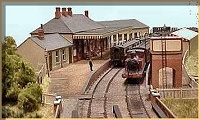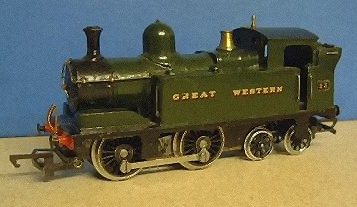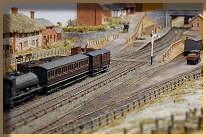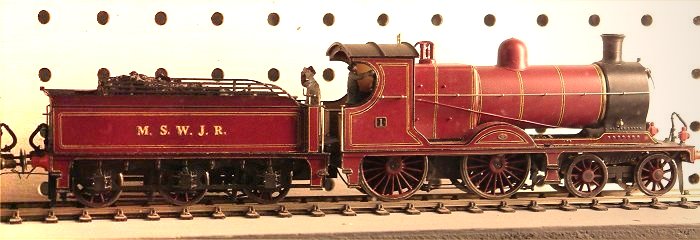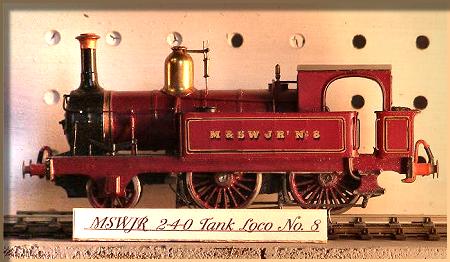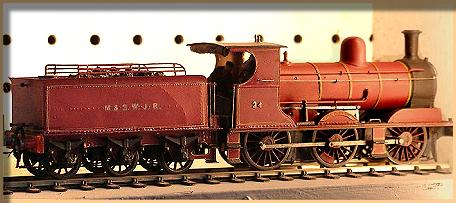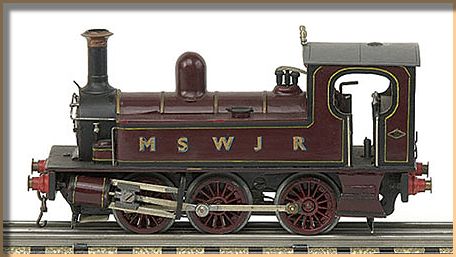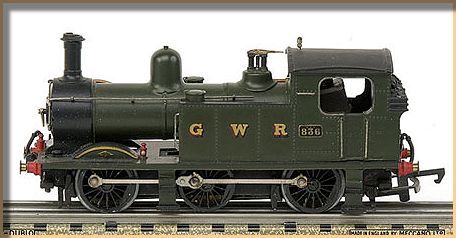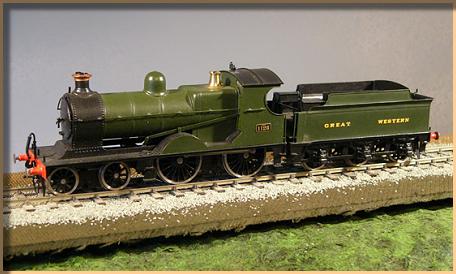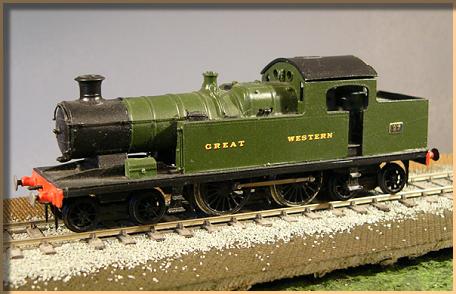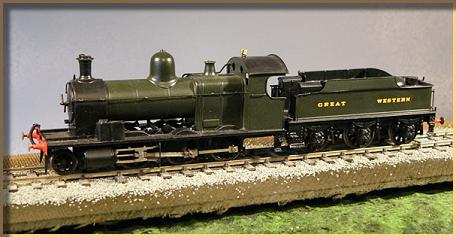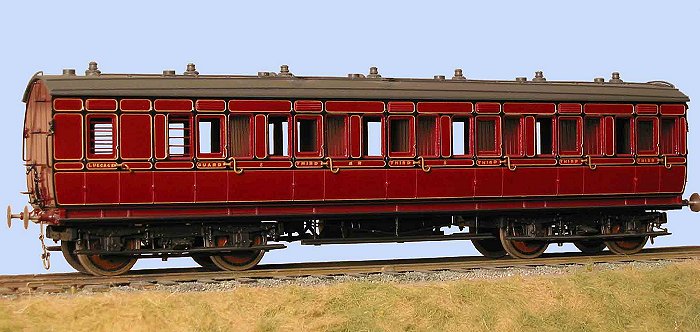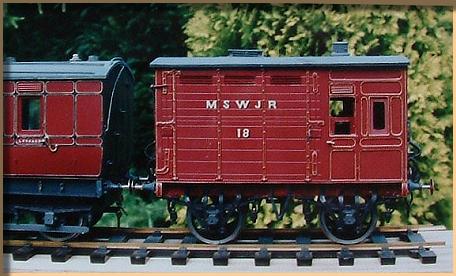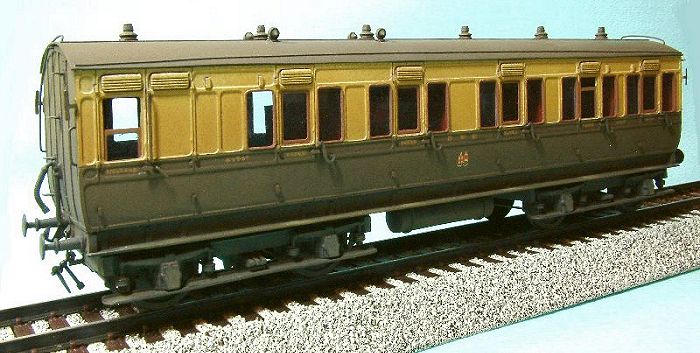| Section Page | Previous Page | Next Page |
Modelling the M&SWJRcompiled by Mikkel Kjartan
These pages celebrate the Midland & South Western Junction Railway, which provides for some very interesting (if also challenging) modelling whether you are into the pregrouping era or the post-1923 scene when the GWR took over. Much of what you need for an initial (and indeed more in-depth) exploration of the M&SWJR is already available on-line at the extensive Swindon's Other Railway website, so what follows here is just a few additional notes, plus a selection of M&SWJR references and models on the following pages to whet your appetite. The following discusses the scope and options for modelling GWR locos, coaches and wagons. A list of available kits and RTR models is available on the next page.
Modelling M&SWJR locos There are, sadly, no RTR models of actual M&SWJR stock on the market. If you are strictly into RTR, your best bet is therefore to model the line in post-grouping times, when standard GWR locos and stock appeared on the M&SWJR scene. There is, I think, something very satisfying about the cross-country workings of the GWR – providing a bit more scope than the brachline without the extremes of the mainline.
If RTR conversions are a possibility for you, one or two options have been described over the years – including the use of a Triang Jinty to produce an M&SWJR 0-4-4T, and a Mainline (now Bachmann) J72 to create an 0-6-0T. These conversion projects are shown here. Apart from that, I have always wondered how the Bachmann Collett Goods might transform into the ex-M&SWJR 0-6-0 No. 1006 as it looked after being Swindonised. The dimensions are a little off, but with a different cab and a few other modifications it might be possible to do an approximation. For the kit-builder, most of what is currently available for locos is in 4mm – with the Roxey Mouldings (ex-Albion) kits at the forefront. This includes one of the North British 4-4-0s in unrebuilt condition, while the rest are in GWR condition. You can see the Roxey kits illustrated towards the end fo this page. One thing to look out for in terms of kits is that the M&SWJR locos were bought in from some of the main outside contractors. This means that some loco kits may be marketed as independent locos or belonging to another company – such as the Beyer Peacock 2-4-0Ts.
Selected GWR Locos on the post-grouping M&SWJR
Modelling M&SWJR passenger stock
In terms of rolling stock, the strictly RTR modeller could turn to the Collett 60' stock from Bachmann and/or the ageing 57' bowended stock from Hornby as an approximation of the ordinary steel-stock that was seen on the line in later years. Again, no pre-grouping M&SWJR stock exists in ready to-run form. For the kit-builder there is however a decent selection available, especially from the Bill Bedford range (see next page). The fact that the M&SWJR took over certain Midland Railway carriages increases the scope for the kit-builder: Some of the MR 43' bogie arc-roof carriages to Diagram 490 & 502 (a total of 16 and 4 respectively) went to the the M&SWJR in the period before WWI, and a few survived into GWR days. These coaches are made as kits by both 51L (4mm) and Slaters (7mm), but Diagram 490 can also be produced by kit-bashing the Ratio MR bogie arc-roof kits. On the latter issue, Richard Kelham has provided the following info: "None of the vehicles modelled by Ratio ever went to the M&SWJR/GWR, though the M&SWJR ex-MR D490 thirds can be modelled by reducing the number of compartments in the Ratio model from 8 to 7 (need underframe mods as well of course, including new bogies). Six of these survived long enough to carry GWR numbers, and presumably livery, though they had all gone by 1930. The M&SWJR also had some almost identical 3rds bought new in 1896–8. These were lit by electricity rather than gas, and most survived in service until the early 1930s." Numbers used for these 3rds in GWR days were:
To this, Michael Barnsley has added: "Several ex-MR D490 coaches lasted until 1930, the last to go being GW No.4497, M&SWJR No.57, withdrawn in the November. I have a photograph of D490 No.4483 (M&SWJR No.21) in GW brown & cream livery, taken after withdrawal in October 1929. Three of the four ex-MR D502 brake-thirds were also taken into GW stock, becoming Nos. 4649 – 465. I have a photo of No.4649 (M&SWJR No.15) in GW brown & cream livery. No.4651 was withdrawn in September 1929, but Nos 4651 & 4649 lasted until September & October 1930 respectively." (Diagram D502 is produced by 51L Models in 4mm scale – see next page, Ed.)
Modelling M&SWJR goods stock Paul Absalom writes: "According to Midland & South Western Junction Railway, Vol.3, Carriages & Wagons by Mike Barnsley (Wild Swan Publications) some of the M&SWJR wagons were based on MR design. I have built a 3-plank open from the Slaters MR 3-plank kit and a covered van based on the 10 ton MR design nos 233–242. Kits for appropriate Private Owner wagons for A Vitti and Arthur Day were available from Slaters." (The former is available in 7mm, the latter in both 4&7mm – Ed). Michael Barnsley has added: "The M&SWJR machinery wagon No.212 was to Midland Railway diagram D333. It was renumbered GW No. 32160 in October 1925 and lasted until September 1934. Mignon Models Studies (MMS) produced a 4mm etched brass kit for this. M&SWJR open wagons Nos.279–298 and 359-398 were essentially built to the LSWR 15' round-ended open wagon design, although in later life many were altered to flat tops, some by building up the sides, and some by cutting down the ends! GW numbers were between 34489 & 34647, and, because some were designated coal wagons, 83165 & 83200.The last open wagon in service was 34501, M&SWJR No.294, withdrawn from capital stock in September 1936, although it then had another 9 years of service as Port Talbot docks wagon No.201471. The last coal wagon in service was No. 83171, M&SWJR No.296, withdrawn November 1935. 4mm cast kits for the LSWR wagons were produced by ABS and FourMost models. M&SWJR goods brake vans Nos.12 – 23 were very similar to LSWR road vans, but with a central pillar veranda support (which carried the central tail lamp) and full arc roof strips instead of the LSWR 'eyebrow' style. The last in service was No.56788, M&SWJR No.23, withdrawn in April 1936, although it survived as Departmental van at Laira until British Railways days. Chivers Finelines produced a 4mm kit for the LSWR version."
M&SWJR references Here is a small selection of articles and links for the M&SWJR modeller. For an elaborate bibliography on the line in general, see the Swindon's Other Railway site.
M&SWJR modelling articles
Selected M&SWJR links
Loco line-up The first three pictures show a selection of some rather nice 4mm locos built by a trio of well-known M&SWJR enthusiasts. Many thanks to Neil Lover for allowing use of the photos. You can see more superb M&SWJR models at Swindon's Other Railway.
The following trio of M&SWJR locos were sold at an auction some years back. The builder and origin of the models is unfortunately unknown, but the models simply have too much atmosphere to ignore. Images courtesy of Vectis Auctions.
Here's another batch of intriguing M&SWJR locos, this time in their later GWR guise and built from the 4mm etched kits by Roxey Mouldings (currently being developed for 7mm scale kits also). Many thanks to Dave Hammersley for allowing use of the excellent photos. You can see more of his interesting range at the Roxey Mouldings website.
Kit & scratchbuilt rolling stock
|
||||||||||||||||||||||||||||||||||||||||||||||||||||||||||||||||||||||||||||||||||||||||
| Section Page | Previous Page | Next Page |
